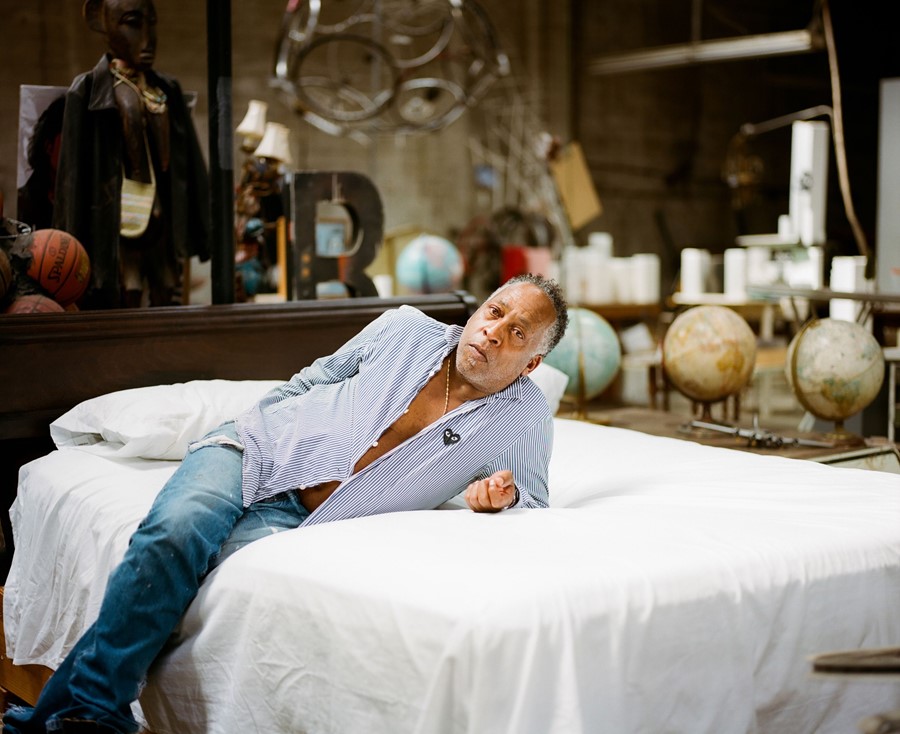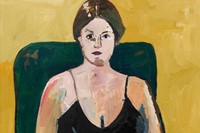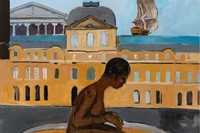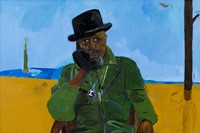A new exhibition at Hauser & Wirth’s recently opened Paris space features the painter’s striking portraits of Black American life
In Henry Taylor’s exhibition at the newly opened Hauser & Wirth in Paris, gargantuan paintings of the rich and famous quietly coexist with canvases depicting everyday people. For the LA-based artist, who collapses time, location and memory into his strikingly graphic, thickly layered paintings, a celebrity is just as worthy of a portrait as a homeless person – in his artistic world, everyone is on an equal plane.
In the new show, titled From Sugar to Shit, Michelle depicts the former first lady of the United States as a giant, black-winged sculpture on display in a museum (one thinks of the enormous Kara Walker and Simone Leigh sculptures centring Black women on an epic scale), while got, get, gone, but don’t you think you should give it back? features Josephine Baker, the 20th-century American dancer, singer, actress and civil rights activist, kneeling in front of a mashup of the Louvre, the British Museum and what appears to be a slave ship, underlining the thorny legacy of colonialism and theft in art museums. Elsewhere, there are portraits of Broadway star Ben Vereen, the mother of British rapper Santan Dave, the artist Kasey Elise Walker, and a joyful, loose self-portrait of Taylor shooting the shit with his late friend and contemporary, Noah Davis – his affection for the American painter summed up in the work’s title, Right hand, wing man, best friend, and all the above!
Born in 1958 in the Los Angeles suburb of Ventura, California, Taylor came to painting late in life, despite art being a throughline in his upbringing. His father was a commercial painter for the US government, and his mother a cleaner; he had his first encounters with art in the houses she worked in. The youngest of eight children – Taylor often refers to himself as Henry the eighth – he later studied journalism, anthropology, and set design at Oxnard College, then moved on to CalArts (whose alumni include Sofia Coppola, Mike Kelley and Catherine Opie). During this time, he worked night shifts at the Camarillo State Mental Hospital as a psychiatric technician, where he often sketched patients while on the job. It was here that Taylor’s immense painterly empathy was first developed, along with his curiosity for painting those on the margins of society; addicts, homeless people, as well as strangers encountered on the street. “I’m receptive, you know what I mean? I’m a sensitive individual,” Taylor told The Guardian in 2021. “I respond to things. I’m empathetic. I don’t try to be hardcore, I don’t want to fake the funk. I just tried to keep it real, bro.”
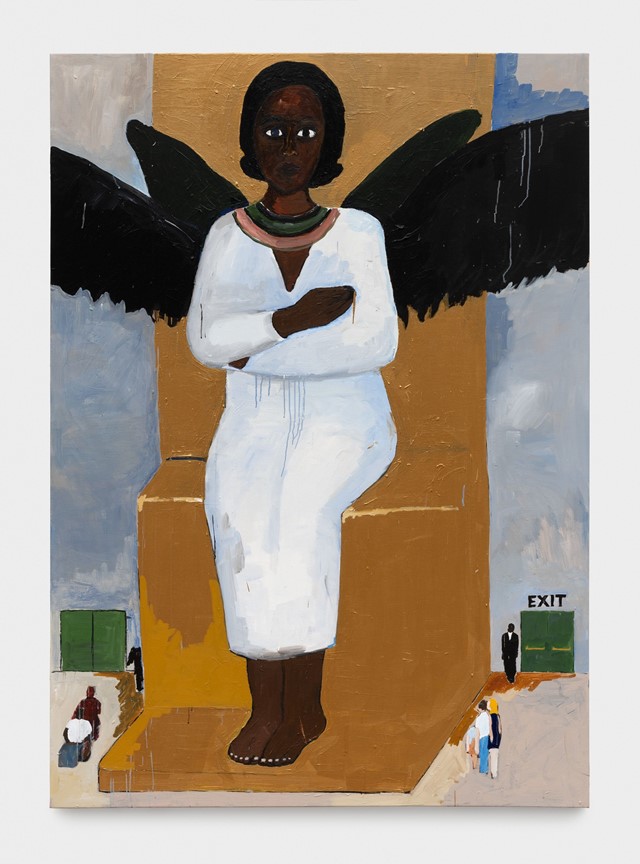
This razor-sharp sense of empathy is clear in two of his most famous paintings of Black American life, THE TIMES THAY AINT A CHANGING, FAST ENOUGH! (2017), which depicts the murder of Philando Castile at the hands of the police, and SEE ALICE JUMP (2011), featuring American athlete Alice Coachman soaring impossibly high above the skyline, mid-jump. From Sugar to Shit at Hauser & Wirth opens just as The Whitney dedicates an expansive show to Taylor in New York, titled B Side.
A self-confessed “hunter-gatherer” of subjects to paint and objects to turn into sculpture, the new show features over 30 works showcasing Taylor’s idiosyncratic curiosity for the world around him. On the ground floor of Hauser & Wirth’s spacious new Champs-Élysées location, a sculpture of a tree with an afro for foliage – made with hair swept up from barber shops in Black American neighbourhoods – greets visitors. This playful, tongue-in-cheek sense of humour is carried through in works like For those... who ask, ‘Do you paint white people?’, a portrait of a woman against a yellow background with echoes of both Alice Neel and Alex Katz, and a text-based work, “And you thought only we ate chitlins”. During slavery, Black people were forced to eat ‘chitlins’ – the most undesirable part of the pig – and here, Taylor juxtaposes the word ‘chitlins’ with ‘andouillette’, a French tripe sausage that is served in fancy restaurants throughout Paris today. Eating offal may now be in vogue, but it wasn’t always, and here Taylor reminds us of the food’s lowly former status, throwing up questions about social hierarchies, shifting tastes, and the fickle nature of status symbols.
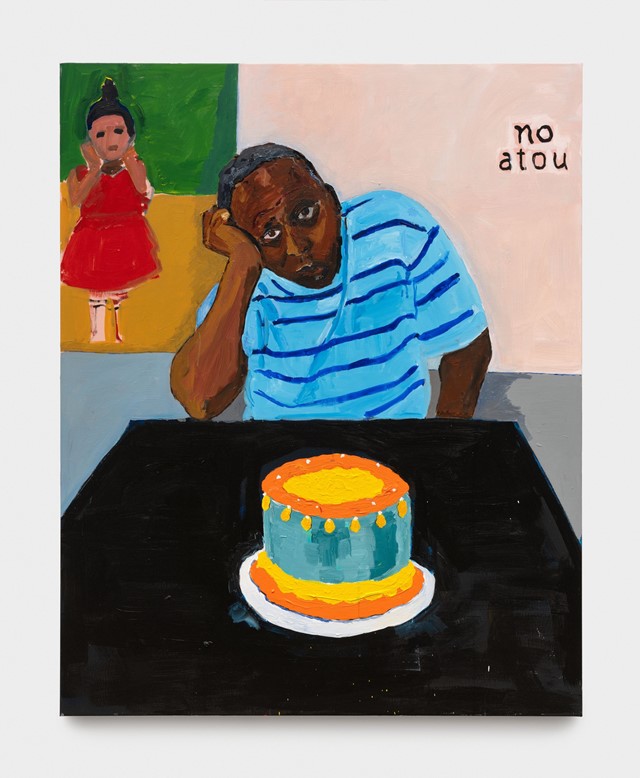
Many of the works on show were created during Taylor’s two-month residency in Paris during the summer, a time in which he drew inspiration from the French impressionists, expressionists and fauvists in museums like the Musée d’Orsay (more broadly, Taylor has cited the influence of artists including Kerry James Marshall, Philip Guston and Gerhard Richter). Spending a summer in the French capital is every artist’s dream, but a self-portrait on the second floor of the gallery points to Taylor’s pervading sense of loneliness during his residency. In no atou – a Tahitian slang phrase – the artist is slumped in front of a birthday cake, all alone, while in the background, a painting-in-progress of his young daughter is propped up against the wall. The now-finished portrait, titled Has anyone seen my cat?, hangs in the same room, and is the most striking in the whole show. In it, Taylor’s daughter wears a sumptuously painted red dress, as her white cat frolics in the background against a vibrant green landscape. Despite being painted from imagination, the image firmly centres his daughter and her interior world, immortalising – and thus elevating – a person, a place, and a moment, as worthy of art.
From Sugar to Shit by Henry Taylor is on show at Hauser & Wirth in Paris until 7 January 2024.
